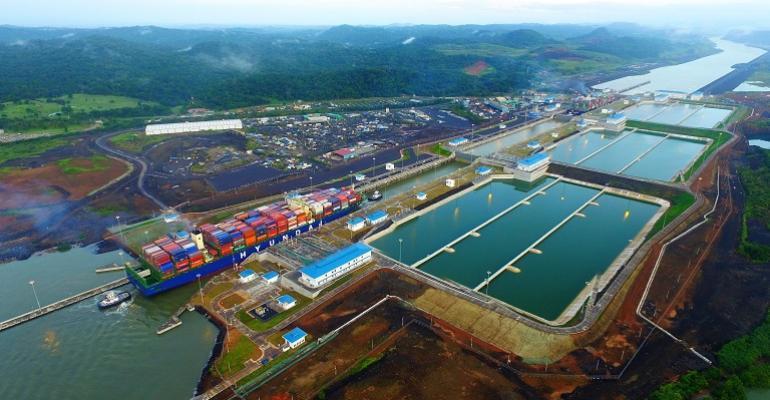Everstream Analytics Chief Meteorologist Jon Davis said that from March through 22 August this year saw the lowest level of rainfall in Panama since the turn of the century. The actual wet season from the start of July to 22 August is only the sixth driest for that seven-week period since 2000, however, came on the back of period of unusually dry weather.
“The minimal rainfall combined with higher temperatures (increased evaporation from soil and lakes) has kept water levels of the freshwater lakes steady which is unusual since typically at this time of year, the levels increase. Because of this, vessel restrictions have been maintained and congestion has steadily increased,” Davis said.
The Panama Canal Authority (ACP) has implemented both draught and daily transit restrictions for the key waterway that links Asia – to the East Coast of the Americas and beyond.
According to the ACP on 24 August there were around 117 vessels on both sides of the canal waiting for transit up from a normal level of around 90 ships. The authority prioritises vessels that have made a transit booking and said that average waiting time for unbooked transits is 9 – 11 days. Of the vessels waiting for transit on 24 August some 50 had bookings, while the remaining 67 did not.
The period of March through to 22 August this year is drier than 2015 and 2019 both of which saw restrictions being put in place by the Panama Canal.
Looking ahead the picture is not a good one for canal water levels. Davis described the short-term outlook for September as “problematic” with a continuation of low rainfall across Panama and higher than normal temperatures.
As result no improvement is expected in the water levels in the Gatun Lakes which feed the canal as normally would be expected at this time of year. “This year is the opposite which is highly unusual and the reason behind the worsening of the situation and an increasingly important issue in the global supply chain.”
Looking further ahead El Nino is expected to intensify in the later part of this year and early 2024 leading to issues for an extended period for the Panama Canal.
Copyright © 2024. All rights reserved. Seatrade, a trading name of Informa Markets (UK) Limited.
Add Seatrade Maritime News to your Google News feed.  |

